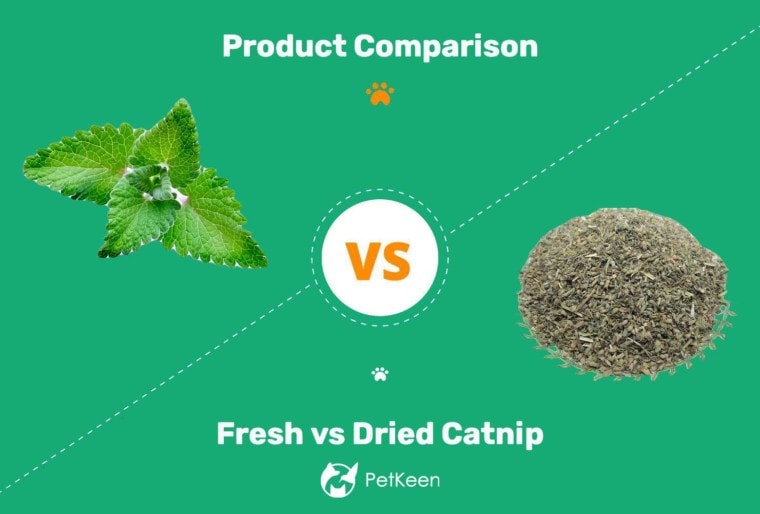
Everyone deserves a little treat occasionally, including our furry feline friends! But while we might head for the chocolate ice cream or a glass of wine, our kitties are inclined to go for the catnip. Admittedly, catnip isn’t every cat’s cup of tea, but about 50-70% of cats are huge fans.
If yours is one of the many who adore the nip, you may have wondered which is preferable—fresh or dried? Is there a difference? Turns out they’re pretty much the same and will work equally on cats, but they do have a minor difference.
Here’s what you should know about catnip and whether you should be using fresh or dried.
What Is Catnip?
Catnip (Nepeta cataria) is an herb that is part of the mint family. When dried, it looks like oregano, but fresh catnip has leaves shaped like hearts and can even grow tiny blooms of various colors. It’s actually not the herb itself that causes cats to get a little euphoric and wild, but an oil on the plant called nepetalactone.

How Does Catnip Affect Cats?
Once your kitty gets a good sniff of the nepetalactone, researchers believe that the oil binds to receptors in the nose, which in turn stimulates neurons headed to the brain. Once in the brain, it’s thought that so-called “happy” receptors are targeted, which results in your cat’s silly behavior. Scientists also believe that catnip mimics pheromones. Interestingly, eating catnip tends to have a different effect—instead of cats getting the zoomies, they get chill.
Cats typically won’t react to catnip until they reach at least 6 months of age, and senior cats tend to have less reaction than younger ones. There is also evidence that a response to catnip is based on genetics.
Is There A Difference Between Fresh & Dried Catnip?
There isn’t a difference between fresh and dried catnip other than fresh catnip is more potent than dried. Other than that, both should have the same effect on your feline! Although you may find that your cat prefers one over the other, so test to see which they like the best.

Is Catnip Safe?
Catnip is perfectly safe for cats, whether it’s sniffed or ingested. Though, you should be careful with ingestion—while catnip is non-toxic and thought to be beneficial for a cat’s digestive tract, eating too much may cause diarrhea or vomiting. Cats are pretty good at regulating themselves when they eat, so it shouldn’t be much of an issue, and they cannot overdose on the herb. If your kitty seems a bit nauseous or cranky, take the catnip away, and they’ll be good in no time.
While the herb itself is harmless, keep in mind that your cat could be exhibiting some hyperactive behavior. This behavior could lead to an accident such as falling or bumping into furniture, so keep an eye on them while they’re zooming about.
Besides being non-toxic, catnip also is not addictive. In fact, after the initial “high” (which won’t last long at all), it’ll take a bit of time before your cat can experience the same effects. However, using catnip too often lessens its ability to work on your pet.
Conclusion
Whether you give your cat fresh or dried catnip makes no difference, really, unless you’re trying to go by potency (or if your pet has a preference). Either way, the effects will be the same for your kitty—a good time followed by a nap. It’s most important to remember that you should give your pets catnip in moderation as too much of a good thing is possible!
- You may also want to read: Catnip Tea for Cats: Benefits, How to Make It & More! (With Recipes)
Featured Image Credit: Left – Mandz11, Pixabay | Right – Dry Catnip






